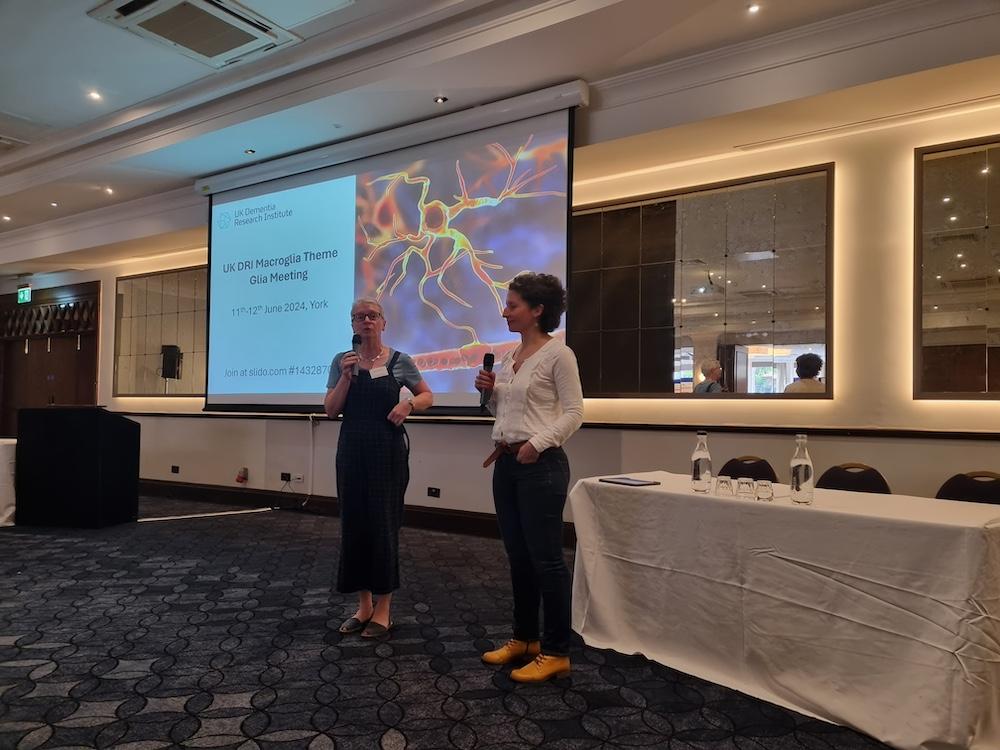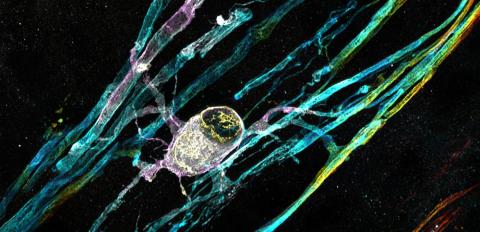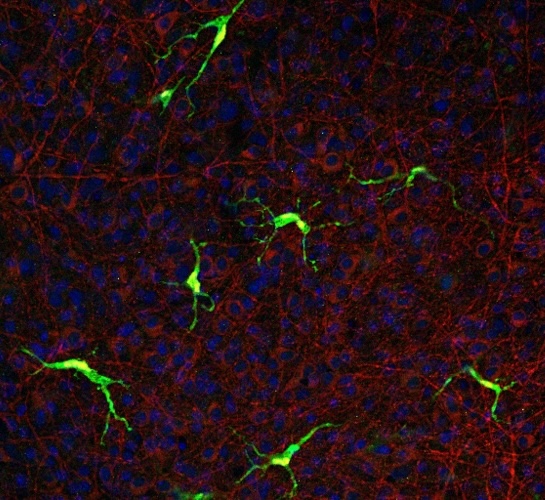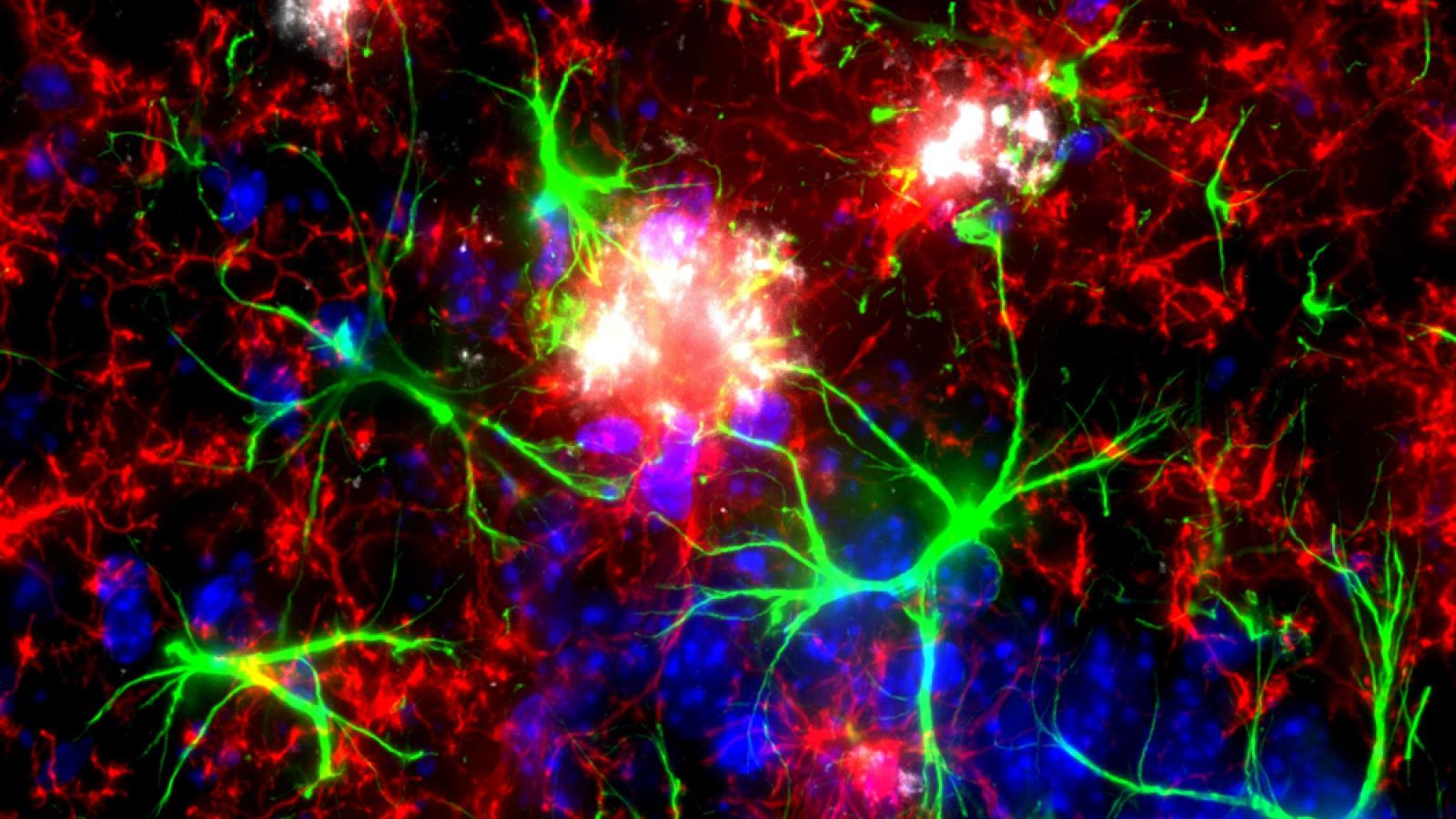Why glia?

The UK DRI Glia network meeting in York in 2024.
Glia are important support cells in the brain and play a crucial role in maintaining brain health. While neurons communicate information through electrical signals, glia act as a support team for these neurons, enabling them to function properly. The types of glia that the UK DRI mainly focuses on include astrocytes, oligodendrocytes, and microglia.
Astrocytes provide nutrients, structural support, and a stable environment for neurons; oligodendrocytes insulate nerve fibres, speeding up signalling; and microglia clear away waste and fight off infections. These are just a few examples of their functions. While activation of glia in response to injury or disease can be protective, it can also be detrimental to neurons. Historically, glia have been understudied compared to neurons, and there is still much to learn about their role in neurodegeneration and how different types of glia interact with each other and with neurons.
The Glia Thematic network brings together researchers from across the UK DRI investigating the role of glia in a range of neurodegenerative conditions including Alzheimer’s disease, Parkinson’s, motor neuron disease, vascular dementia, and progressive multiple sclerosis. UK DRI researchers have a breadth of expertise which they are using to study glia, including molecular and cellular biology, data science and bioinformatics, and developing and using innovative stem cell models. The network promotes knowledge exchange and the development of collaborative projects investigating and developing therapies to target glia in neurodegenerative conditions.
Latest news

Research
Read more about the research output of the UK DRI Glia thematic network and its members in the 'Research' tab

